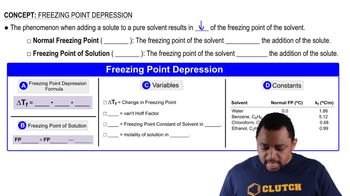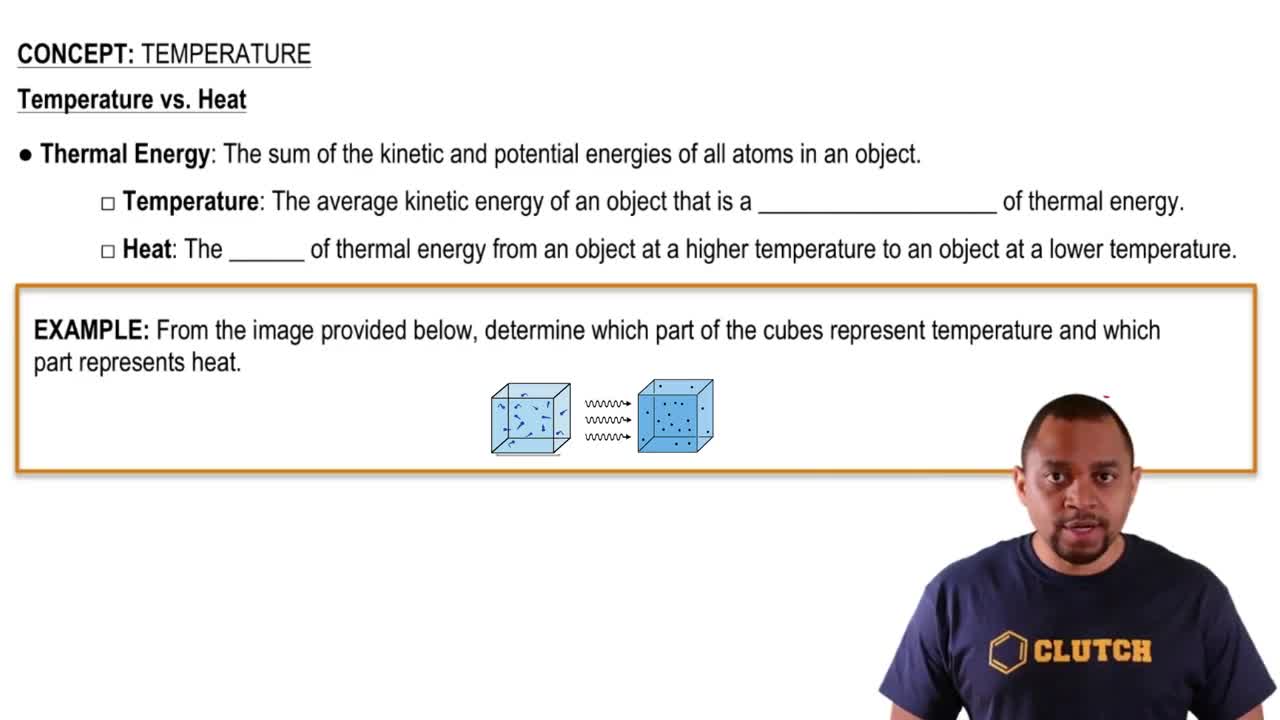Here are the essential concepts you must grasp in order to answer the question correctly.
Freezing Point Depression
Freezing point depression is a colligative property that describes how the addition of a solute, such as salt, lowers the freezing point of a solvent, like water. This phenomenon occurs because the solute disrupts the formation of the solid structure of ice, allowing the liquid phase to exist at lower temperatures. The effectiveness of salt in melting ice is dependent on the temperature and the concentration of the salt.
Recommended video:
Freezing Point Depression
Temperature and Solubility
The solubility of salt in water is temperature-dependent. At higher temperatures, more salt can dissolve in water, which enhances its ability to lower the freezing point. Conversely, at very low temperatures, the solubility of salt decreases significantly, meaning that there is less salt available to disrupt the ice structure, resulting in minimal or no melting of snow.
Recommended video:
Phase Changes and Kinetic Energy
Phase changes, such as melting, are influenced by the kinetic energy of molecules. At -2 °C, the kinetic energy of water molecules is sufficient to overcome the forces holding them in a solid state, allowing melting to occur when salt is added. However, at -30 °C, the kinetic energy is too low for the water molecules to transition from solid to liquid, even with the presence of salt, preventing any melting from happening.
Recommended video:





